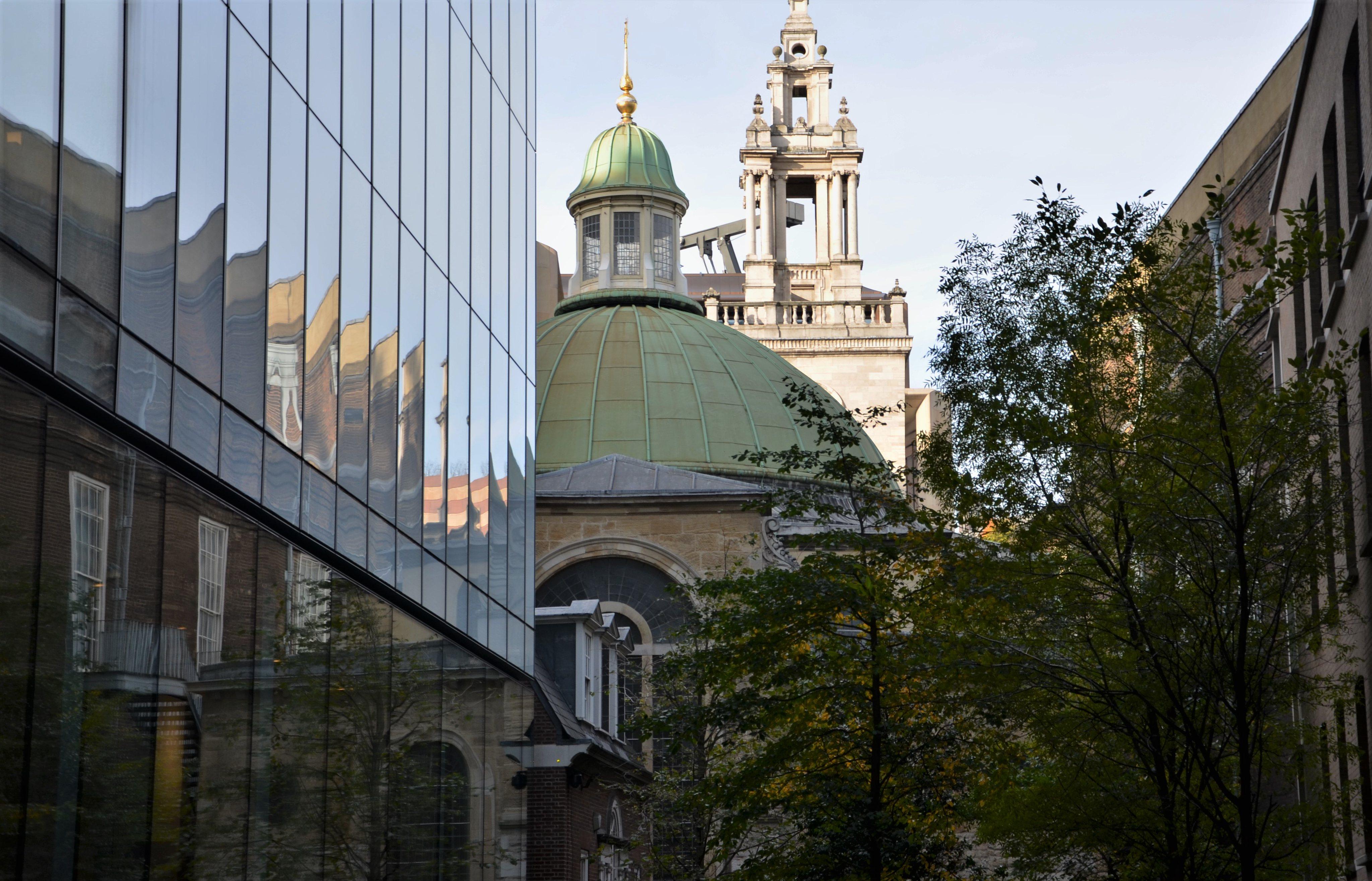St Michael Paternoster Royal
City of London, Greater London
This is a Wren church with a steeple of 1713 and fine windows, including one for Dick Whittington, who is buried here.

Nothing prepares you, as you climb the 13 steps up to St Stephen for the majestic space within, the dome is Wren's finest and based on his original design for St Paul's.
City of London, Greater London
By the 18th century, the building was world famous, the Italian sculptor/architect Antonio Canova declaring, 'We have nothing to touch it in Rome.' And the architectural historian Nikolaus Pevsner lists it as one of the ten most important buildings in all of England.
Wren lived at number 15 Walbrook and took special care in rebuilding this, his parish church, between 1672 and 1679, after the previous 15th century church was destroyed in the Great Fire. The steeple was added in 1713-17, but the large domed vestibule, the first to be built in England, is integral to his original vision, inspired, perhaps, by the domed churches he had seen in France.
Unlike St Paul's, which is fashioned in heavy masonry, the dome of St Stephen's rests on elaborate carpentry frames so that it requires much smaller supports, giving an unparalleled feeling of lightness and brightness, uninterrupted by galleries. The spiritual effect depends not on decorative richness but on pure geometry and soaring space.
In Victorian times, the windows were filled with stained glass, which were destroyed in World War II and mostly replaced with clear glass because higher surrounding buildings have robbed the church of much of its light. (Otherwise, the church sustained only slight damage in the war.) In 1888, the box pews were removed and the paving stones were replaced by mosaic, which unfortunately contradicts Wren's statement that this is a Neo-Classical not a Gothic church.
According to the precepts of the day, the pulpit is more impressive than the altar, which in Wren's time, therefore, missed out on using the space beneath the dome. Now, however, Henry Moore's controversial massive white polished stone altar, installed in 1987, stands proudly in the centre of this wonderful church, under the glorious dome.
City of London, Greater London
This is a Wren church with a steeple of 1713 and fine windows, including one for Dick Whittington, who is buried here.
City of London, Greater London
When Wren rebuilt this 12th century church in 1681-86, he employed some of the greatest craftsmen of his age.
City of London, Greater London
On Easter Day 1727 St Mary Woolnoth of the nativity was reopened after it’s rebuilding by Nicholas Hawksmoor, which took 12 years and was paid for from the proceeds of the tax on sea borne coal.